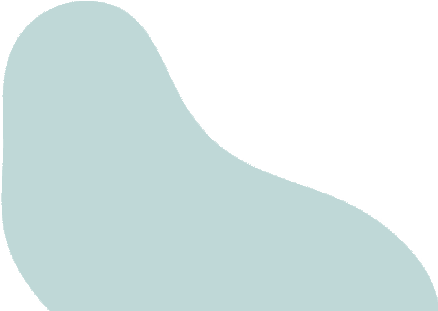Knowledge
Discovery 2.0 - Taking Your Customer Conversations Deeper
Discovery is the intentional and planned approach to uncovering your prospect’s needs, priorities, and challenges. It’s more than a single conversation; it’s a continuous process of gathering the right insights to inform solutions and shape the sales process.
Good Discovery aligns solutions with customer needs. Great Discovery does that and builds trust and credibility—setting the foundation for a lasting relationship. Done well and often, Discovery becomes a powerful tool for crafting highly customized proposals and solutions that not only meet but exceed customer expectations.
For companies offering highly customized services, Discovery isn’t optional. It’s critical. It’s why we’ve seen an overwhelming demand for resources and strategies to dive deeper into improving Discovery. While I’ve touched on this topic before (see my previous article on Mastering Discovery), this article goes one level deeper. Think of it as Discovery 2.0.
Here, we’ll explore the types of questions you can use in your Discovery process and how to leverage the right type of question at the right moment to gain a deeper understanding of your customer’s needs—perhaps even deeper than they understood themselves before the call.
Question Types and When to Use Them
Open-Ended vs. Closed-Ended Questions: Exploration vs. Focus
Open-Ended Questions Open-ended questions are designed to gather broad, qualitative insights by encouraging respondents to elaborate in their own words. They invite exploration, spark creativity, and allow you to uncover details that may not surface otherwise. This type of question helps paint a fuller picture of the prospect’s needs, priorities, and challenges.
Example: “What are your thoughts about the proposal?” or “What are you hoping to accomplish with a change?”
Use when: You’re trying to explore or understand something deeply.
Closed-Ended Questions Closed-ended questions are precise and structured to elicit straightforward, specific responses. They’re essential when you need to confirm facts, clarify details, or quickly assess a prospect’s preferences. While they don’t promote broad exploration, they’re a critical tool for honing in on exact information or making decisions.
Example: “Do you like the proposal?” or “Are you ready for a change?”
Use when: You need to confirm or clarify specifics.
Recall vs. Process Questions: Driving Depth in Discovery
Recall Questions Recall questions prompt respondents to retrieve and share specific facts, details, or memories. These questions are straightforward and often serve as the foundation for understanding baseline information about a prospect’s business or situation. They help you establish context and ensure you’re aligned with the prospect’s reality.
Example: “How many employees work at your company?” or “What is the name of your current vendor?”
Use when: You’re gathering specific information or assessing someone’s understanding.
Process Questions Process questions delve deeper, encouraging respondents to reflect, analyze, and share their perspectives or opinions. These questions require more thought and often reveal a prospect’s motivations, decision-making processes, and strategic thinking. By asking process questions, you can uncover the “why” behind a prospect’s challenges and goals.
Example: “Why do you think what you’re doing isn’t working?” or “What do you see as the cost of not changing?”
Use when: You’re uncovering someone’s thought process, decision-making, or future plans.
Leading Questions: A Double-Edged Sword
Leading questions subtly (or overtly) suggest a desired answer. They’re a nuanced tool in Discovery—potentially helpful for guiding conversations but risky if used carelessly. When used sparingly and intentionally, leading questions can provide direction or focus for prospects who may struggle to articulate their thoughts. However, overuse can bias responses, limiting the depth of insights you gain.
Example: “Would you say X is your top challenge?” or “What frustrates you about your current vendor?”
Risk: They can bias the conversation, particularly if you don’t realize you’re doing it.
Benefit: They can help guide or focus the respondent if they’re stuck.
Use when: You need to guide a conversation, but use them consciously and sparingly.
The Multiple-Choice Question: A Leading Question in Disguise
Multiple-choice questions often aim to make it easier for respondents to answer complex or open-ended queries. While well-intentioned, they inherently guide the respondent toward predefined options, potentially constraining their thoughts and limiting broader insights. By narrowing the scope too quickly, you risk missing important nuances in their responses.
Example: “What is your biggest challenge? Is it managing your team? Staying within budget? Or building a plan?”
Instead, prioritize giving respondents space to articulate their own thoughts:
Let them talk. Allow space for a full answer.
If guidance is needed, reframe: “What challenges have you faced when it comes to managing your team?”
Funneling Questions: Guiding Without Leading
Funneling questions allow you to guide respondents through a logical progression of ideas without dictating their answers. By starting broad and narrowing the focus or vice versa, you can gather comprehensive information while maintaining the respondent’s autonomy.
Funneling Down: Broad to Narrow Start with open-ended questions to gather general information, then gradually focus on specifics. This approach ensures you don’t overlook important details while progressively moving toward actionable insights.
Example: “Tell me about your job.” → “What’s hard about your job?” → “How have you tried to solve that problem in the past?” → “If I gave you XYZ tool, would that make the problem better?”
Use when: You want to gather maximum information while still landing the plane.
Funneling Up: Narrow to Broad Begin with specific questions to establish context, then broaden the scope to explore related areas. This method encourages respondents to open up and reflect on broader implications or opportunities.
Example: “Do you use project management software?” → “What software do you use?” → “What do you like about the software platform?” → “How has the software improved your business?”
Use when: You’re trying to help someone open up or relax.
Closing Thoughts
Discovery is the cornerstone of crafting highly customized proposals and solutions. For companies offering tailored services, the stakes are even higher. Planning thoughtful Discovery conversations is the first step, but strategically choosing the types of questions to ask and knowing when to use them can take your Discovery process to new heights.
Remember: Discovery isn’t just about gathering data. It’s about building trust, and credibility, and understanding your customer on a deeper level. By refining your approach to questions, you’ll not only align solutions more closely with customer needs but also establish yourself as a trusted partner in solving their challenges.






